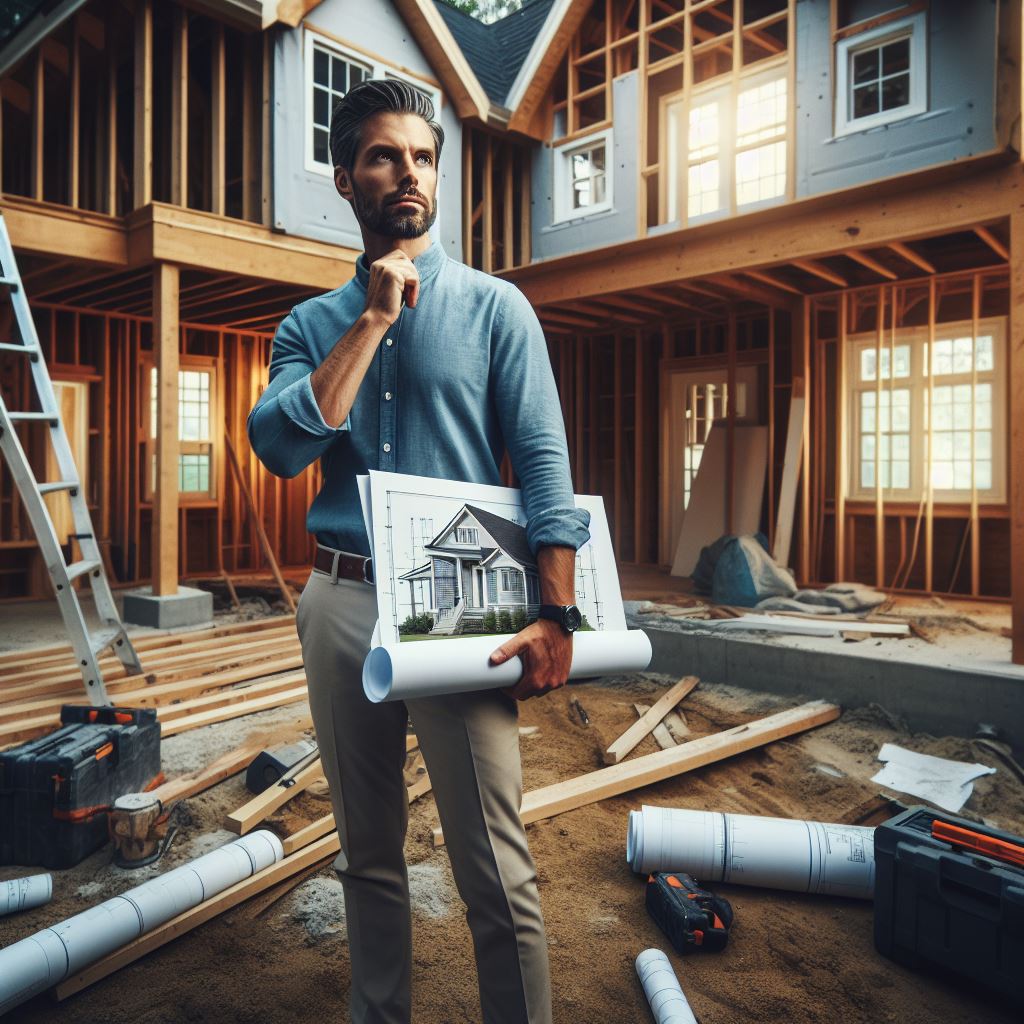Introduction
203k Rehab Loans: In the dynamic landscape of real estate financing, 203(k) rehab loans stand out as a versatile tool for both buyers and homeowners.
Essentially, a 203(k) loan combines the cost of purchasing or refinancing a home with the expense of renovating or rehabilitating it into a single mortgage, streamlined under one convenient package.
This unique financial product, insured by the Federal Housing Administration (FHA), enables borrowers to finance the purchase or refinance of a property along with the necessary funds for renovation, all within a single loan.
The significance of 203(k) rehab loans in the real estate industry cannot be overstated.
They serve as a lifeline for properties in need of repair or renovation, breathing new life into neighborhoods and revitalizing communities.
By facilitating the financing of both the acquisition and rehabilitation of properties, these loans open doors for homebuyers who might otherwise be unable to afford properties in need of significant repairs.
Moreover, 203(k) loans play a crucial role in addressing the housing supply shortage by incentivizing the renovation of distressed properties.
They encourage investment in properties that might otherwise remain vacant or underutilized, ultimately contributing to the overall improvement of housing stock and the stabilization of property values.
Furthermore, 203(k) loans offer benefits not only to buyers but also to sellers, lenders, and contractors.
What is a 203(k) Rehab Loan?
A 203(k) Rehab Loan is a unique financing option designed to help individuals purchase homes in need of rehabilitation or repair.
This loan program, backed by the Federal Housing Administration (FHA), offers borrowers the opportunity to finance both the purchase price of a property and the cost of renovation or repairs into a single mortgage. Here’s what you need to know about 203(k) Rehab Loans:
Definition and Purpose of the Loan
At its core, a 203(k) Rehab Loan provides financing for the purchase or refinance of a property in need of rehabilitation or renovation.
This loan program enables borrowers to finance the purchase price of a home along with the funds needed to repair or upgrade it.
By bundling both the purchase and renovation costs into a single loan, borrowers can streamline the financing process and avoid the hassle of obtaining separate loans for the purchase and renovation phases.
The primary purpose of a 203(k) Rehab Loan is to facilitate the rehabilitation and revitalization of properties, particularly those that may not qualify for traditional financing due to their condition.
This program aims to encourage homeownership while also improving the housing stock by making it easier for individuals to purchase and renovate fixer-upper properties.
Different Types of 203(k) Rehab Loans Available
There are two main types of 203(k) Rehab Loans available to borrowers:
- Standard 203(k) Loan: This option is suitable for extensive renovations or structural repairs, such as room additions or major renovations. Borrowers can borrow up to the FHA loan limit for their area, plus the cost of repairs.
- Limited 203(k) Loan: Also known as the “Streamlined” 203(k), this option is ideal for minor repairs and cosmetic upgrades, with a maximum repair cost of $35,000. Limited 203(k) Loans are more straightforward and have fewer documentation requirements compared to the standard option.
Eligibility Criteria for Borrowers
To qualify for a 203(k) Rehab Loan, borrowers must meet certain eligibility criteria established by the FHA. These criteria typically include:
- Demonstrating the ability to repay the loan
- Meeting FHA’s minimum credit score requirements
- Occupying the property as their primary residence
- Working with an FHA-approved lender
- Adhering to FHA’s guidelines regarding property condition and repair requirements
Overall, 203(k) Rehab Loans offer an attractive financing solution for individuals looking to purchase and renovate properties in need of repair.
By combining the purchase and renovation costs into a single loan, borrowers can overcome the challenges associated with financing fixer-upper homes and embark on their homeownership journey with confidence.
Read: Home Bargaining Strategies: Get Your Best Deal
Benefits of a 203(k) Rehab Loan
A 203(k) Rehab Loan offers several advantages for homebuyers looking to purchase and renovate a property.
Ability to finance both the purchase and rehabilitation of a property
With a 203(k) Rehab Loan, borrowers have the opportunity to finance both the acquisition of a property and its subsequent renovations.
This eliminates the need for separate loans and streamlines the financing process.
Lower down payments compared to traditional loans
One of the significant benefits of a 203(k) Rehab Loan is the lower down payment requirements.
Borrowers can secure a loan with as little as 3.5% down, making homeownership more accessible for many individuals.
Flexible options to accommodate different property types and improvements
203(k) Rehab Loans offer borrowers a range of flexibility when it comes to property types and improvements.
Whether purchasing a single-family home, multi-unit property, or even a condominium, the loan can be tailored to meet the specific needs of the project.
Potential for increased property value and returns
Investing in a property using a 203(k) Rehab Loan can potentially lead to increased property value and returns.
By financing renovations that enhance the property’s functionality and aesthetics, homeowners can create a more desirable space and potentially command higher prices in the future.
Overall, a 203(k) Rehab Loan provides borrowers with the unique opportunity to finance both the purchase and renovation of a property.
With lower down payment requirements, flexible options, and the potential for increased property value, this type of loan offers a advantageous solution for homebuyers.
Read: Down Payment Grants: Your Questions Answered
Understanding the Process
Overview of the steps involved in obtaining a 203(k) rehab loan
Securing a 203(k) rehab loan involves several key steps to ensure a smooth process from application to completion.
Firstly, it’s crucial to assess your needs and determine the scope of your renovation project.
Next, find a qualified lender experienced in handling 203(k) loans. They will guide you through the application process and explain the specific requirements.
Once you’ve chosen a lender, you’ll need to submit an application along with detailed project plans and cost estimates.
The lender will evaluate your eligibility based on factors such as credit score, income, and the property’s value post-rehabilitation.
If approved, the lender will issue a loan commitment, allowing you to proceed with the renovation work.
Throughout the renovation process, funds will be disbursed in stages, known as “draws,” to cover the cost of materials and labor.
It’s essential to work closely with your lender and contractor to ensure the project stays on track and within budget.
Finally, upon completion of the renovations, a final inspection will be conducted to verify that the work meets the necessary standards.
Importance of working with an experienced lender and contractor
Working with experienced professionals can make all the difference when it comes to obtaining and successfully completing a 203(k) rehab loan.
An experienced lender will not only help you navigate the complexities of the loan application process but also provide valuable insights and guidance tailored to your specific needs.
Likewise, partnering with a reputable contractor who has prior experience with 203(k) projects is crucial.
They can help you develop realistic project plans and cost estimates, as well as ensure that the renovations meet all required standards and regulations.
Additionally, having a reliable contractor can help prevent delays and cost overruns, ultimately saving you time and money.
Documentation and requirements during the loan application process
During the loan application process, you’ll need to provide various documentation to support your eligibility and the proposed renovation project.
This may include income verification, tax returns, credit reports, and a detailed project proposal outlining the scope of work and cost estimates.
Additionally, the property itself will need to meet certain requirements, including being a primary residence or investment property, meeting minimum property standards, and having a maximum loan-to-value ratio.
Your lender will help you gather all necessary documentation and ensure that you meet all requirements to qualify for a 203(k) rehab loan.
In essence, understanding the process of obtaining a 203(k)-rehab loan is essential for a successful renovation project.
By working with experienced professionals and providing the necessary documentation, you can navigate the loan application process with confidence and turn your renovation dreams into reality.
Read: Home Buying Success: Negotiating Beyond Price

Key Considerations for Borrowers
When embarking on a 203(k) rehab loan journey, borrowers must carefully assess various factors to ensure a successful renovation project.
Here are the key considerations to ponder:
Evaluating the costs and feasibility of the rehabilitation project
Before diving headfirst into a 203(k) rehab loan, borrowers need to meticulously evaluate the costs and feasibility of their renovation plans.
This involves conducting a thorough inspection of the property to identify necessary repairs and upgrades.
By obtaining quotes from contractors and other professionals, borrowers can develop a comprehensive budget that accounts for all expenses, including materials, labor, permits, and contingency funds.
Estimating the expected return on investment (ROI)
One of the primary motivations for pursuing a 203(k) rehab loan is the potential for a favorable return on investment.
Borrowers should carefully assess the market value of the property both before and after renovations to gauge the potential ROI.
Consulting with real estate experts or appraisers can provide valuable insights into market trends and property values, helping borrowers make informed decisions about their renovation plans.
Determining the timeline for completing the renovations
Timing is crucial when it comes to renovating a property with a 203(k) loan.
Borrowers must establish a realistic timeline for completing the renovations, taking into account factors such as the scope of work, contractor availability, and any potential delays or unforeseen challenges.
By setting clear deadlines and milestones, borrowers can stay on track and ensure that the project progresses smoothly.
Planning for unexpected setbacks or additional expenses
Despite careful planning, renovation projects often encounter unexpected setbacks or expenses along the way.
Borrowers should anticipate these challenges and budget accordingly by setting aside contingency funds to cover unforeseen costs.
By planning for the unexpected, borrowers can minimize stress and financial strain and keep their renovation project on track.
All in all, borrowers considering a 203(k) rehab loan should carefully evaluate the costs, ROI, timeline, and potential challenges associated with their renovation project.
By conducting thorough research and planning ahead, borrowers can maximize the benefits of their 203(k) loan and transform their property into their dream home.
Read: Energy-Efficient Mortgages: A Primer
Potential Challenges and Limitations
Common Issues During the Process
Navigating the waters of a 203(k) rehab loan can present its fair share of challenges for borrowers.
One common issue is the complexity of the paperwork involved.
From gathering estimates to documenting renovations, the process can be overwhelming.
Additionally, finding a lender experienced with these loans can be difficult, leading to delays and frustrations.
Moreover, coordinating with contractors and adhering to strict timelines adds another layer of difficulty.
Finally, unforeseen structural issues or project scope changes can arise, causing budget overruns and further complications.
Restrictions and Limitations
While 203(k) loans offer flexibility, they also come with limitations.
Firstly, borrowers must adhere to strict guidelines regarding eligible renovations.
Certain luxury improvements or structural changes may not qualify, limiting creative freedom.
Moreover, there are maximum loan amounts based on property values, which can restrict the scope of renovations.
Additionally, borrowers may face challenges if the property requires extensive repairs or if they lack sufficient cash reserves to cover unforeseen costs.
Overcoming Challenges and Finding Alternatives
Despite these challenges, borrowers can take proactive steps to navigate the 203(k)-rehab loan process successfully.
Firstly, thorough research and due diligence are crucial.
Borrowers should educate themselves on the requirements and enlist the help of experienced professionals, including lenders and contractors.
Building a reliable team can streamline the process and mitigate potential issues.
Additionally, maintaining open communication with all parties involved can help address challenges as they arise.
Having realistic expectations and being prepared for setbacks can also reduce stress during the renovation process.
In cases where 203(k) loans may not be feasible, borrowers can explore alternative financing options.
Home equity loans or lines of credit offer flexibility for renovations, although they may come with higher interest rates and shorter terms.
Grants or subsidies from government programs may also be available for certain types of improvements, particularly for low-income households.
Ultimately, with careful planning and perseverance, borrowers can overcome the challenges of rehabilitating properties with 203(k) loans or find suitable alternatives to achieve their renovation goals.
Tips for Maximizing the Benefits of a 203(k) Rehab Loan
When utilizing a 203(k)-rehab loan, there are several strategies you can employ to maximize its benefits.
By considering the following tips, you can ensure that you make the most of this financial tool:
Research and compare different lenders to find the best terms and rates
Before obtaining a 203(k)-rehab loan, it is essential to explore multiple options and compare various lenders.
By doing so, you can find the best terms and rates that suit your needs.
Take the time to research different lenders and carefully compare their offerings, such as interest rates, fees, and eligibility requirements.
Keep in mind that even a slight difference in interest rates can significantly impact your monthly payments and overall loan cost.
Seek recommendations for reputable contractors with experience in rehabilitation projects
When embarking on a rehabilitation project with a 203(k)-rehab loan, hiring a reputable contractor is crucial.
Ask for recommendations from friends, family, or acquaintances who have undertaken similar projects.
Look for contractors who have experience in rehabilitating properties and are familiar with the specific requirements of 203(k) loans.
They should have a track record of delivering quality work within budget and timeline constraints.
Plan and budget carefully to ensure the loan amount is sufficient for all necessary renovations
Proper planning and budgeting are key to maximizing the benefits of a 203(k)-rehab loan.
Before applying for the loan, create a detailed plan outlining the scope of your renovations and associated costs.
Thoroughly assess the property and identify all necessary repairs and renovations.
Estimate the costs accurately, accounting for both labor and materials.
Remember to allocate additional funds for unexpected expenses that may arise during the project.
Ensure the loan amount you request is sufficient to cover all planned renovations.
Inadequate funds may limit your ability to complete the project or force you to compromise on the quality of the work.
By following these tips, you can maximize the benefits of a 203(k)-rehab loan and ensure a successful and satisfying rehabilitation project.
Proper research, hiring reputable contractors, and careful planning and budgeting are the keys to unlocking the full potential of this financing option.
Conclusion
In this post, we’ve delved into the world of 203(k) Rehab Loans, an innovative financing option for real estate ventures.
We’ve explored how these loans can empower investors and homeowners alike by providing the funds needed to purchase a property and renovate it in one streamlined process.
Through the two types of 203(k) loans – the Limited 203(k) and the Standard 203(k) – borrowers can address a wide range of renovation needs, from minor repairs to structural changes.
We’ve also discussed the key features of 203(k) loans, such as the ability to finance both the purchase price and renovation costs, flexible eligibility requirements, and potential for increased property value.
Understanding these aspects can help borrowers make informed decisions when considering this financing option.
203(k) Rehab Loans offer a plethora of benefits and opportunities for investors and homeowners.
By combining the purchase and renovation costs into one loan, borrowers can simplify the financing process and avoid the hassle of securing multiple loans or dipping into personal savings.
Additionally, the flexibility of 203(k) loans allows for creative renovation projects that can transform a distressed property into a dream home or a lucrative investment.
Moreover, these loans can be a game-changer for communities by revitalizing neighborhoods and increasing property values.
By rehabilitating rundown properties, borrowers not only improve their own financial standing but also contribute to the overall improvement of the community.




